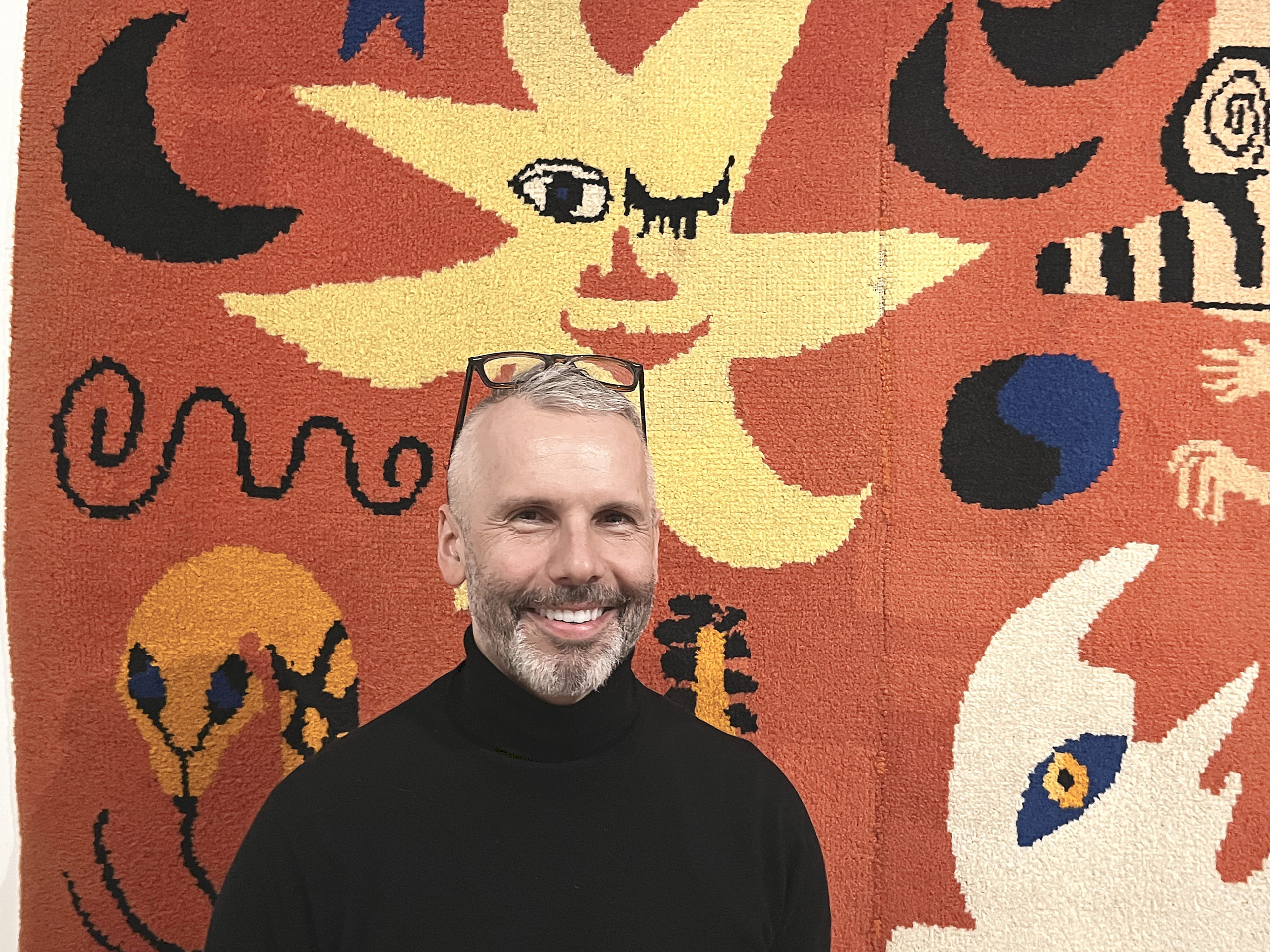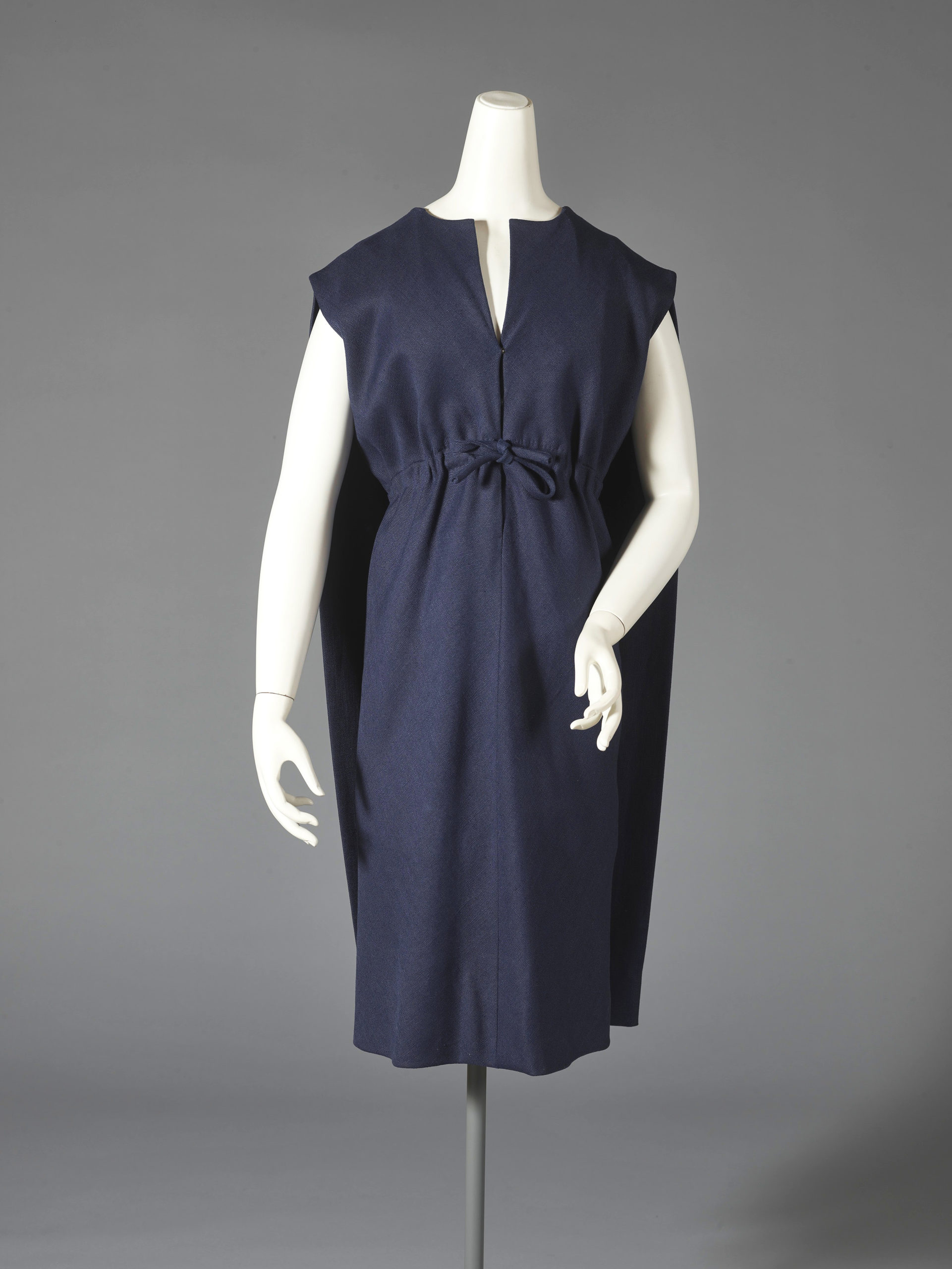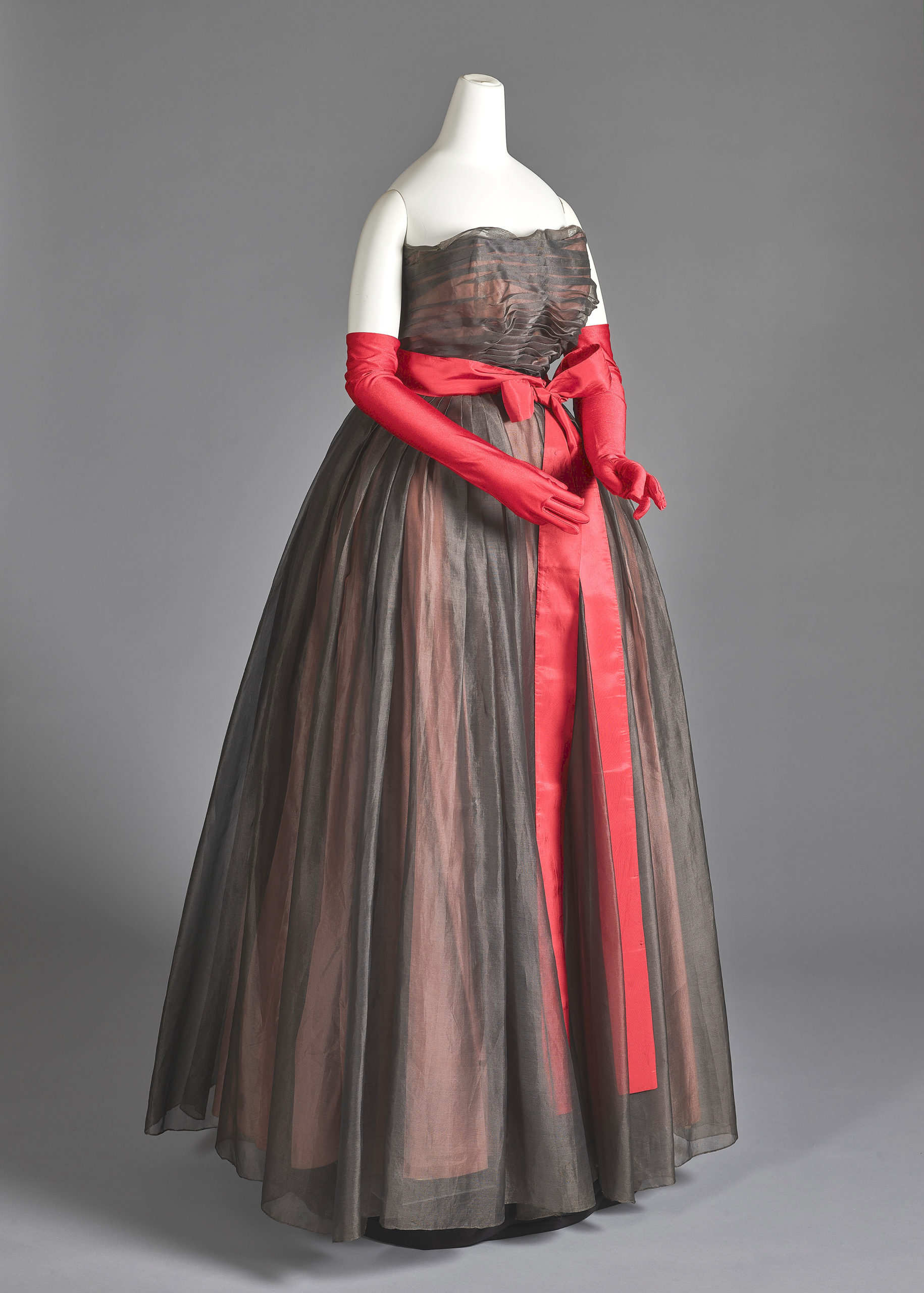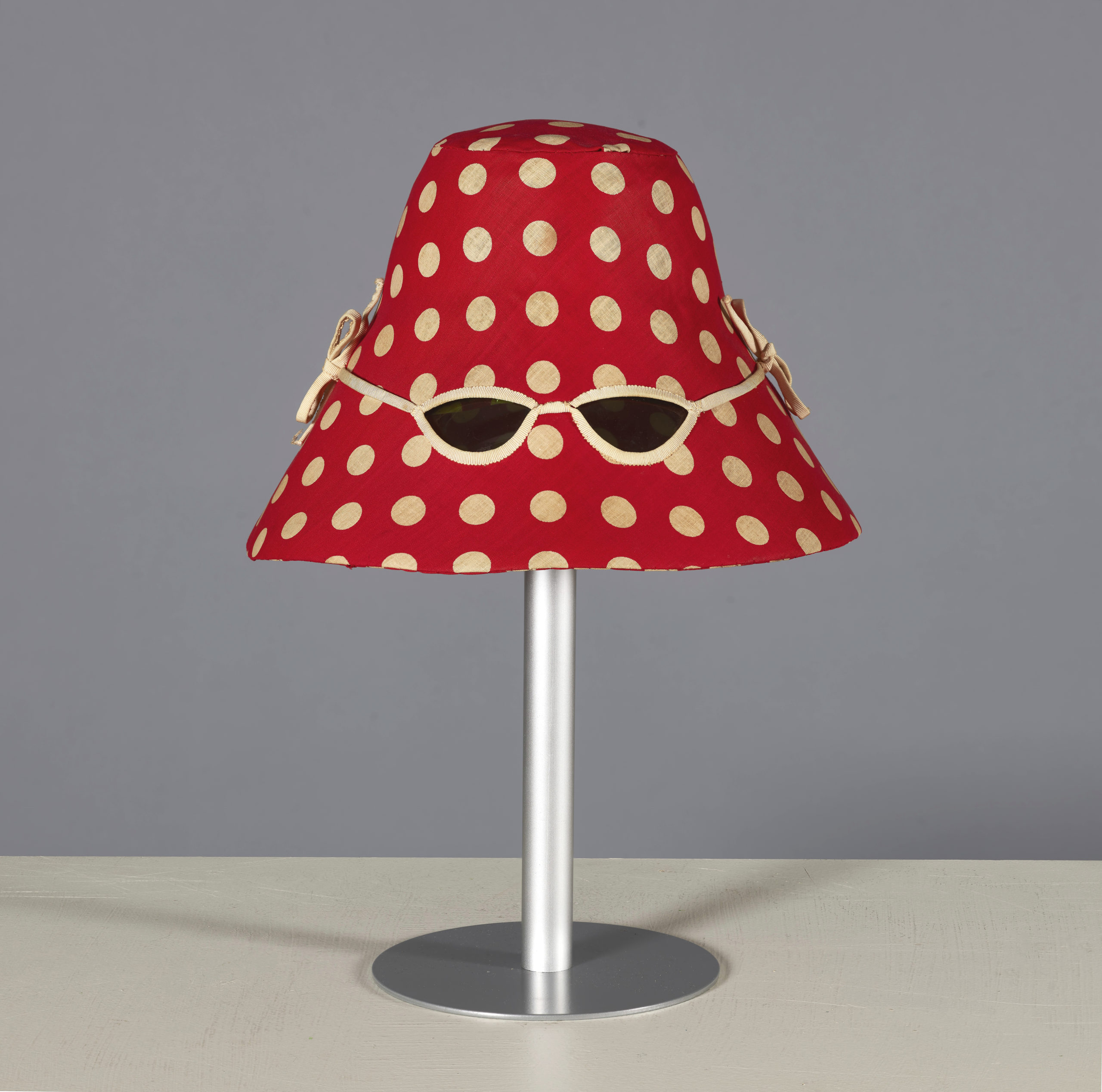
Ned Lazaro with hooked rug designed by Alexander Calder.
The Wadsworth Atheneum Museum of Art recently appointed David E. (Ned) Lazaro as associate curator of costume and textiles. His job is to research, manage and interpret a collection of about 2,500 textile objects and 5,000 costumes and accessories ranging in time from the Egyptians to contemporary, in size from thimbles to tapestries and representing every continent. Antiques and The Arts Weekly reached out to Lazaro to take measure of his work of cataloging and inventorying the Wadsworth’s costume and textile collections.
Congratulations on your recent appointment. What were you doing before coming to the Wadsworth?
Thank you! Prior to joining the Wadsworth Atheneum, I was curator of textiles at Historic Deerfield in Deerfield, Mass., a terrific early American history and decorative arts museum many of your readers will be familiar with.
An adjunct duty for you is to organize installations and exhibitions and present public programs. What’s coming up in the way of textile or costume exhibitions?
We just closed a show called “Relax! Leisure and Style,” which looked at historic examples of fashions worn by people unwinding on weekends or at home. And we’ve got two great installations coming up this fall. “Tales to Tell: The Story of Psyche Tapestries” opens on November 17 and features our rare set of five Seventeenth Century tapestries depicting scenes from the story of Psyche. A mythological and allegorical story, the plight of Psyche to be with Cupid touches upon the human desire for love and all its attendant emotions. The show will hopefully bring to life not only this entertaining story, but also help people to understand why tapestries were so valued and expensive in Europe right up through the Eighteenth Century. The second show, “Marian Anderson: Dressed for Success,” opens on December 21 and spotlights two dresses in the collection that were worn by the famed contralto opera singer. Marian Anderson (1897-1993) was born with an amazing voice and reached national and international acclaim for it, despite hardships she encountered as a Black woman. In researching these two dresses, my costume and textiles colleague Kat Sarris and I discovered just how important clothes were to Anderson’s public persona. Along with the two dresses we’ll also try to feature audio and video recordings of the singer and reproduce some images of her from the collection of the Amistad Center for Art & Culture.

Cristóbal Balenciaga (Spanish, 1895–1972), Sack dress, 1958. Linen. Gift of Mrs Marcus Bassevitch.
What is the “Follow the Thread” initiative at the museum designed to achieve?
Working with our museum chief executive officer and director, as well as colleagues in development and marketing, the “Follow the Thread” program is designed to engage supporters who are interested in helping to reignite the museum’s costume and textiles collection. The initiative will help the Wadsworth in its commitment to bringing this stunning collection back into the mainstream of the museum’s activity, through raising funds for salaries, operating materials, exhibitions and acquisitions. In addition to “Follow the Thread,” the museum is fortunate to have a dynamic and vital Costume and Textiles Society auxiliary group who help plan regular programming and lectures for members, as well as special off-site visits to local and regional collections. Both endeavors join like-minded people who are interested in costume and textiles and passionate about preserving and advancing the Wadsworth’s collection for the Twenty-First Century and beyond.
Obviously, there is a synergy between art and fashion. What are some new ways you are exploring to document and help the public understand those connections?
We’re planning some focused opportunities with our curatorial colleagues at the Wadsworth to display examples of clothing and textiles (either individually or in small groupings) in select galleries that have more traditionally featured fine arts and/or non-textile decorative arts. Populating the galleries in this way helps our visitors to make those connections between art and fashion or art and domestic interiors in ways they may not have thought of before. When you have a more complete context for the art of a given period or region, you can see and learn about the past in a more holistic, visual way.
What are some of your current research interests?
Being in an art museum that collects fashion and textiles from all periods and all corners of the globe is like being a kid in a candy store. It is incredibly inspiring. I am extremely impressed with the Wadsworth’s collection of women’s Twentieth Century fashion, both high fashion as well as examples of more moderate and “regular” clothing. Right now, the collection has opened my eyes to the diversity of styles worn during the 1950s. We tend to think of this decade as one characterized only by full-skirted silhouettes and impractically small waists. But our collection can really tell a broader story from this period. And one connected to the greater Hartford region, too. Elsewhere, we also have an amazing collection of Eighteenth Century religious vestments from Europe, made with reused patterned silks that were donated to the church when they fell out of style in favor of newer patterns. A future show that looks at this collection could open up discussions about religion and appearance, as well as the practicalities of dressing to impress a higher power.

Hubert de Givenchy (French, 1927–2018), Ball Gown, 1952. Silk, chiffon, taffeta. Gift of Mr and Mrs Burton G. Tremaine.
What do you think Thirtieth Century folks will make of today’s design and fashion aesthetics?
Tough question! We’re so closely connected to our own contemporary styles it can be hard to predict how they’ll be seen. I think one observation that will be made is how diverse early Twenty-First Century styles are compared to previous centuries. There’s arguably more of a global presence in fashion and interior design now than ever before. Plus, consumers exercise personal preference and self-expression in ways that the market has to respond to, and the fashion press has had to acknowledge. All that being said, with the benefit of hindsight they might remark upon how fashion in 2023 is stressing boxier shapes, and (finally) modeling those styles on more diverse bodies. There is still a collectively defined ideal, but it is broader than ever before.
You’ve contributed to several publications. What were some of the topics, and which editorial project was the most fun?
Delving into late Seventeenth and early Eighteenth Century Indian painted and printed cottons exported into England, Europe and the American colonies was a great challenge. Especially in New England, where extant examples of these fabrics are so rare, I had to rely on written evidence from merchant account books, correspondences and probate inventories that enumerate clothing and household textiles to get a sense. Even then, a clear understanding isn’t always possible, because uses of words like calico, painted and chintz 300-400 years ago may not always translate the same way in the Twenty-First Century. Just like today, one person’s use or understanding of a word may not be the same as that of their neighbor, business associate or client. I also really enjoyed the article I wrote on the effect of French couturier Christian Dior (1905-1957) on New England fashion in the late 1940s. Much has been written on the famed designer but taking a regional (and American) approach helped, I think, to nuance the larger global discussion and interest.
Since there are regional differences in dress and textile art, do you see a fit with your area of expertise and the Wadsworth’s Art Bridges Cohort program, the multi-year, multi-institutional exhibition partnership?
Most definitely! The Wadsworth is the lead institution in the Art Bridges-sponsored American South Consortium, led by my colleagues in the American art department, Erin Monroe and Laura Leonard. This group is part of the Art Bridges Cohort Program, a national program committed to supporting multi-year, multi-institutional partnerships among museums that create exhibitions to inspire and deepen engagement with local audiences. The Wadsworth’s cohorts include three partners: Columbia Museum of Art (S.C.); the Mobile Museum of Art (Ala.); and the Montgomery Museum of Fine Arts (Ala.). Working collaboratively, the cohort will present a series of exhibitions shaped by the Wadsworth’s and partners’ collections that will broaden the story of American art through fresh curatorial perspectives that emphasize material culture.
Our contribution to the Spotlight Series (touring the four museums through early 2025) is “Alexander Calder: Collaborative Creations.” The Wadsworth’s holdings include a rare constellation of textiles associated with the Connecticut artist Alexander Calder (1898-1976). This variety of textiles ranging from hooked rugs to a woven tapestry reveal not only Calder’s involvement in the medium, but spotlight his collaborations with others, most especially his wife, Louisa Calder (1905-1996). Louisa was a noted textile artist, and this Spotlight also suggests historic precedents that inspired her.

Jacques Fath (French, 1912–54), Hat, 1954. Cotton, silk, plastic lenses, woven straw interfacing. Gift of Mr and Mrs Burton G. Tremaine.
Have you been able to identify any under-researched areas of the Wadsworth’s collection pertaining to your purview?
We’re excited to build upon the research in several under-represented areas of the costume and textiles collection, including historic fiber art of the Americas; examples of textiles and clothing made by several different Asian cultures; beaded textiles produced on the African continent; and textiles made in the Near or Middle East. To this aim, we’ve begun to get the word out about the initiative to reboot our costume and textiles collection and enlist outside expertise in these areas.
Last year, you mounted an exhibition that explored the aesthetic and material culture of hairdressing in the Eighteenth and Nineteenth Centuries. What were some of the key takeaways from that?
At Historic Deerfield we mounted a modest installation of the Eighteenth and early Nineteenth Century New England items related to hair and hairstyling. These items included wig curlers, hair curlers, an 1830s hair piece and a reproduction Eighteenth Century wig that was loaned to the museum from the Massachusetts Historical Society. The show also looked at visual culture in the form of portraits and satirical prints. This display was augmented by a day-long symposium that explored the importance of hair in other cultures and time periods. A key takeaway from those two events was the fact that all cultures think about hair and manipulate it as part of dress. The specifics of course may differ from one culture or person to another. Hair is extremely powerful both today and in the past, and like clothing, it communicates so much. Here at the Wadsworth, my colleague Vanessa Sigalas is the lead curator on a larger exhibition about the topic, called “Styling Identities: Hair’s Tangled Histories,” which will be on view March–August 2024.
—W.A. Demers




